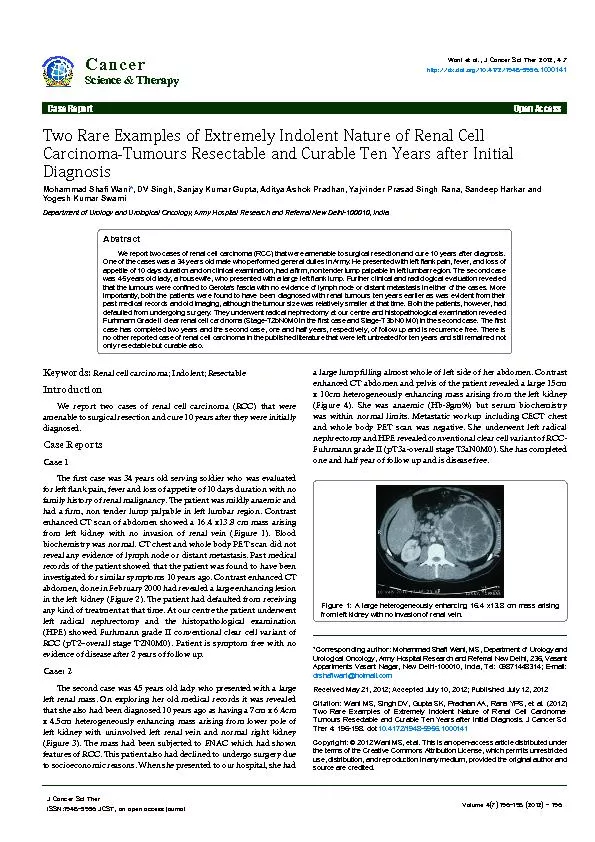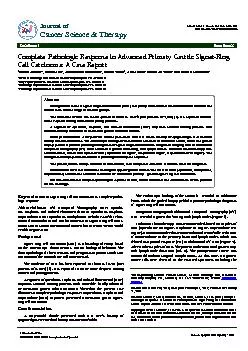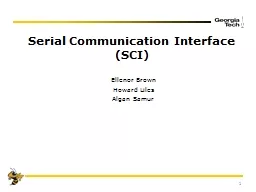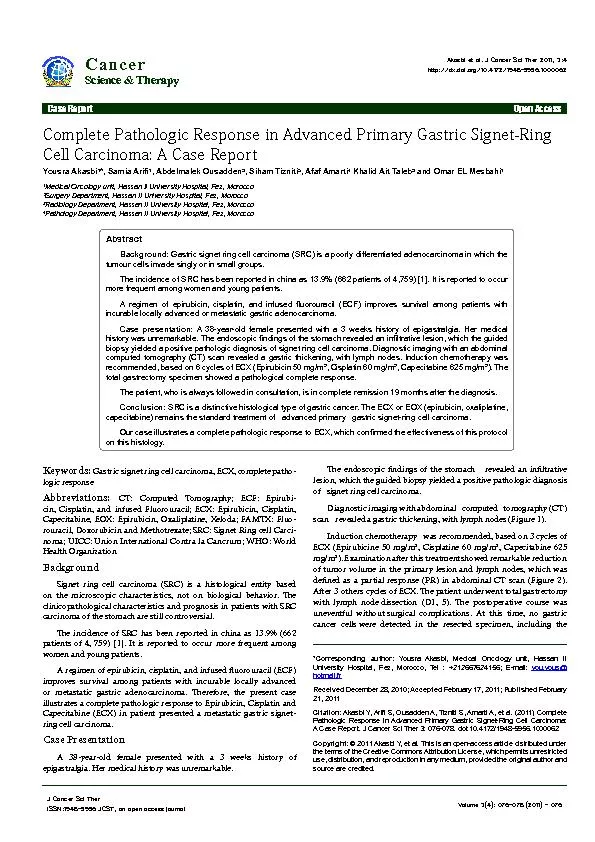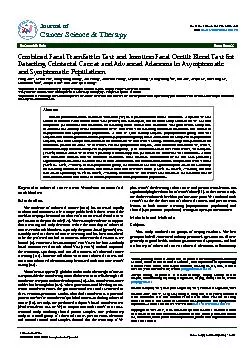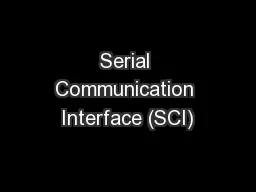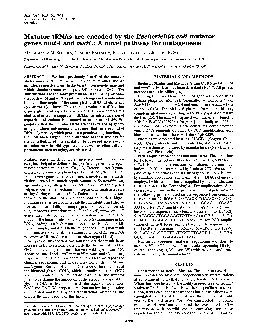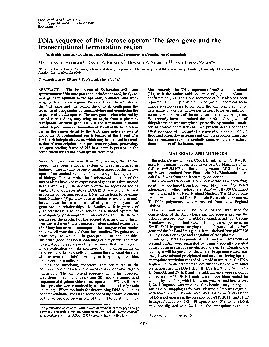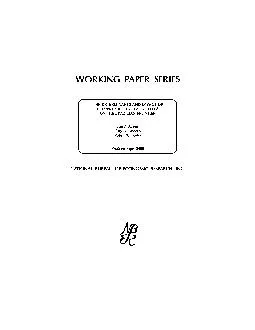PDF-J Cancer Sci Ther
Author : faustina-dinatale | Published Date : 2016-06-14
Volume 47 196198 2012 196 ISSN19485956 JCST an open access journal Open Access Case Report Cancer Science Therapy Wani et al J Cancer Sci Ther 2012 47 httpdxdoiorg10417219485
Presentation Embed Code
Download Presentation
Download Presentation The PPT/PDF document "J Cancer Sci Ther" is the property of its rightful owner. Permission is granted to download and print the materials on this website for personal, non-commercial use only, and to display it on your personal computer provided you do not modify the materials and that you retain all copyright notices contained in the materials. By downloading content from our website, you accept the terms of this agreement.
J Cancer Sci Ther: Transcript
Download Rules Of Document
"J Cancer Sci Ther"The content belongs to its owner. You may download and print it for personal use, without modification, and keep all copyright notices. By downloading, you agree to these terms.
Related Documents

